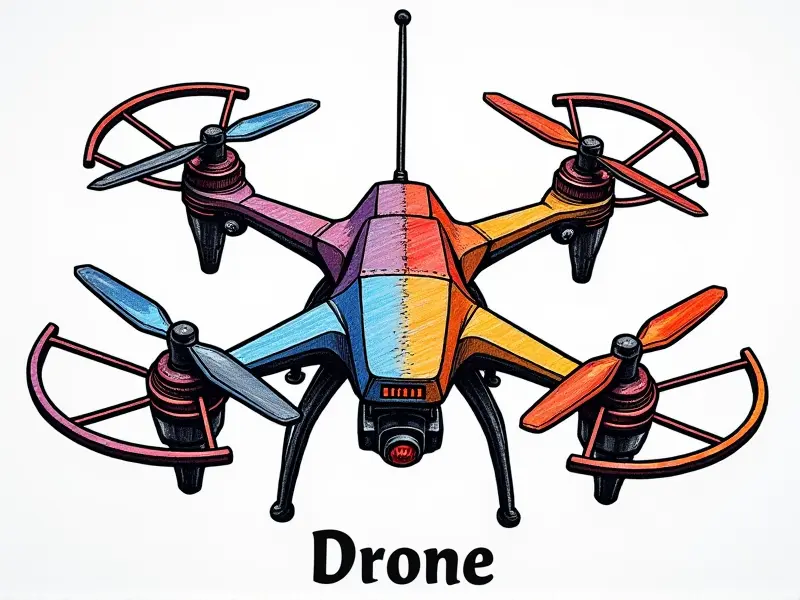How does an FPV camera work?

How Does FPV Camera Technology Work?
First-person view (FPV) cameras are a crucial component in the world of drone racing and aerial photography. These specialized cameras provide real-time video feeds to pilots, allowing them to control their drones as if they were sitting on board. But how does this technology actually work? In this article, we'll explore the inner workings of FPV cameras, breaking down their components and functionality.
Inside the FPV Camera: A Closer Look
The first step to understanding an FPV camera is taking a closer look at its internal structure. Unlike traditional video cameras, FPV cameras are optimized for speed and clarity in real-time transmission. This means they have specific components designed to handle high frame rates and wide-angle views.
Understanding FPV Camera Functionality
An FPV camera's primary function is to capture live video footage from the drone's perspective and transmit it wirelessly to a display device, such as goggles or a monitor. This process involves several key steps:
- Capture: The camera lens captures visual data.
- Processing: An image sensor converts the captured light into an electronic signal.
- Transmission: A transmitter sends the processed video feed to a receiver.
Breaking Down FPV Camera Components
To appreciate how an FPV camera works, it's essential to understand its components. The main parts include:
- Lens: Captures the visual data and focuses it onto the image sensor.
- Image Sensor (CMOS or CCD): Converts light into an electronic signal for processing.
- Transmitter: Sends the processed video feed to a receiver in real-time.
- Circuit Board: Houses the processor and other electronics responsible for image processing and transmission.
What Makes FPV Cameras Unique?
FPV cameras stand out from conventional cameras due to their specialized design. They are optimized for speed, clarity, and low latency, which is crucial in fast-paced environments like drone racing. Additionally, they often feature wide-angle lenses that provide a broader field of view.
FPV Camera 101: A Beginner's Guide
If you're new to FPV cameras, here are some key points to consider:
- Resolution and Frame Rate: Higher resolution and frame rates provide better image quality but may increase latency.
- Lens Type: Wide-angle lenses offer a broader field of view but can introduce distortion.
- Transmission Quality: Reliable transmission is crucial for real-time viewing without lag or interference.
How FPV Cameras Enhance Drone Racing
In the competitive world of drone racing, FPV cameras play a pivotal role. They allow pilots to see through their drones' eyes, enabling them to navigate complex courses with speed and precision. This immersive experience is what makes FPV racing so thrilling.
The Science Behind FPV Camera Vision
FPV camera vision relies on advanced optics and electronics to deliver a seamless viewing experience. The combination of high frame rates, wide-angle lenses, and low-latency transmission ensures that pilots can make split-second decisions during races.
Inside the World of FPV Cameras
The world of FPV cameras is constantly evolving with new technologies and innovations. From improved image sensors to more efficient transmitters, advancements in this field continue to push the boundaries of what's possible in drone racing and aerial photography.
Key Components Of An FPV Camera
To fully appreciate an FPV camera, it’s crucial to know its key components:
- Lens Quality: High-quality lenses reduce distortion and improve clarity.
- Image Sensor Type (CMOS/CCD): CMOS sensors are generally more power-efficient but may have lower light sensitivity compared to CCDs.
- Transmitter Power: Stronger transmitters can transmit signals over longer distances and through obstacles.
- Latency Reduction: Lower latency ensures a smoother, more responsive viewing experience.
Exploring the Technology Inside an FPV Camera Lens
The lens is one of the most critical components in an FPV camera. It captures light and focuses it onto the image sensor. Wide-angle lenses are common in FPV cameras due to their ability to provide a broader field of view, which is essential for navigating tight spaces.
Conclusion
In conclusion, FPV cameras are sophisticated devices that play a crucial role in drone racing and aerial photography. By understanding the technology behind them—such as high frame rates, wide-angle lenses, and low-latency transmission—you can appreciate their importance and functionality. Whether you're a seasoned pilot or just starting out, mastering the use of an FPV camera is key to achieving success in this exciting field.

